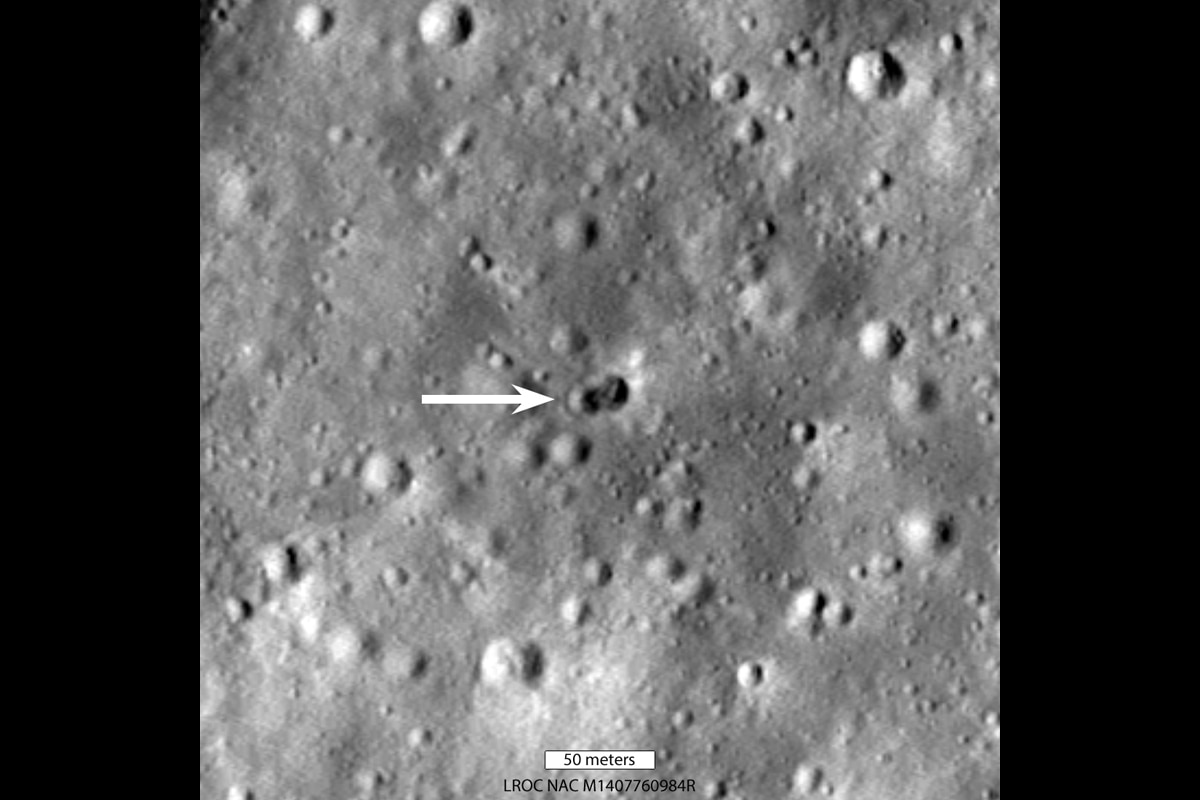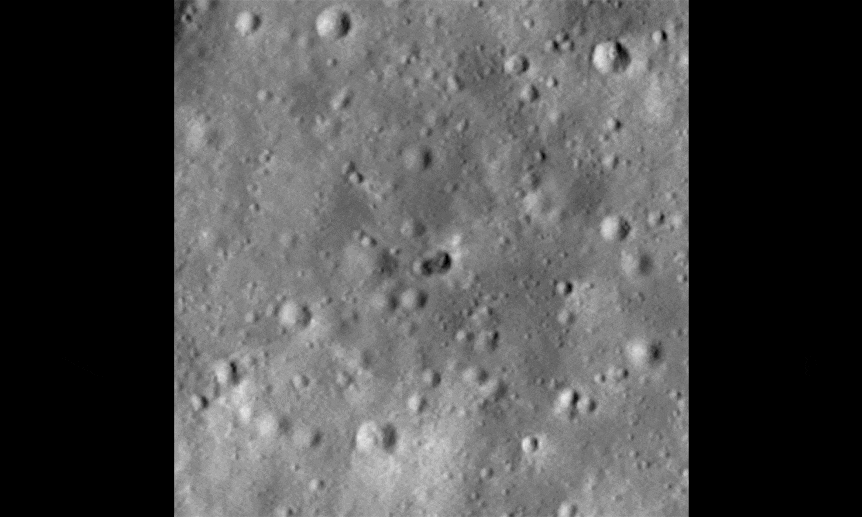Create a free profile to get unlimited access to exclusive videos, sweepstakes, and more!
NASA mission spots Chinese rocket impact craters on the Moon
Looks like China hit a double: Side-by-side craters on the Moon from a rocket booster.

On March 4, 2022, an upper-stage rocket booster slammed into the Moon.
We know this much for sure. But as soon as you dig into this story, it gets weird.
The central figure in this saga is Bill Gray, a software designer who wrote Guide, a sophisticated piece of programming used by professional and amateur astronomers to calculate the orbits and positions of asteroids in the sky. He wrote about this as the events happened.
The object was discovered on March 14, 2015 by the Catalina Sky Survey, which takes images of the sky to look for near-Earth asteroids. It was thought to be just such an asteroid at first and given the temporary designation WE0913A, but not long after it was identified as something orbiting the Earth, not the Sun, implying it was more likely to be a piece of space junk, a rocket booster of some kind that was left in a high orbit around the Earth after its fuel was spent.
Backtracking the orbit, it was found to have passed by the Moon just two days after SpaceX launched the Deep Space Climate Observatory (or DSCOVR) mission on a Falcon 9 rocket, so naturally and understandably it was assumed this object was in fact the upper stage of that F9. However, not too long after it became clear that was a coincidence, and the object was on a very different orbit than the DSCOVR spacecraft — Gray has an updated version of his page with more information.
The orbit matched that of a Chinese lunar mission, the Chang’e 5-T1, launched in October 2014, which was designed to test atmospheric re-entry of a capsule sent to the Moon. It used a three-stage Long March 3C, and in fact some students at the University of Arizona were able to show that spectra taken of the object matched that of the third stage of the Long March rocket much better than that of the Falcon 9.
But another twist: The Chinese government claimed that the booster burned up in Earth’s atmosphere “in a safe manner” not long after the mission. Gray points out that this may have been confusion on their part of what mission was being discussed, and is very confident it was in fact the 5-T1 booster.
It was predicted to impact the lunar far side on March 4, 2022, and on May 22, NASA’s Lunar Reconnaissance Orbiter (or LRO) took images of the region. It found a new impact in the correct area, but then this story took yet another turn: It’s a double crater.
The two craters overlap; one is 16 meters and the other 18 meters wide, together creating a crater about 28 meters across. A tennis court is about 24 meters long for comparison.
A single object hitting the Moon should generally leave a single crater. There are lots of double craters known, likely due to either binary asteroids — two rocks orbiting each other that hit nearly simultaneously — or a single object that breaks up shortly before impact.
Dozens of human-made objects, including rocket boosters, have hit the Moon, and many have been seen; the Saturn S-IVB third stage boosters that put humans on the Moon orbited for a while before finally impacting, and while the craters left are somewhat irregular or elongated in shape, none made a double crater.
So why did this object do so? That’s still a mystery. A booster is essentially a long tube with very heavy rocket engines and nozzles at one end and tanks of fuel along its length. Once the fuel is used up those tanks are pretty light. Most of the force of impact and crater carving comes from the engines, and I’d think the rest of the booster itself would perhaps modify that crater at best, elongating it.
I wondered initially if the rocket came in at a low angle. The top of the booster hitting first could create one crater, then the engines hitting 10 or so meters downrange carving out the second, but Gray notes that the impact angle was only 15° off vertical, so that can’t be the explanation. If the booster still had a payload attached at the top then you might expect two craters, since it would have a heavy mass at each end, but the 5-T1 successfully deployed its payload and the top should have been empty.
At this point it’s just not clear why there are two craters. The LRO images have enough resolution to see the craters but their exact characteristics are still tough to tease out. Impacts at high velocity — many thousands of kilometers per hour — can be tricky to understand, especially when the lunar surface is rough and irregular, which can affect the shapes and structures of craters.
This is an interesting story due to the mystery and sleuthing involved — Gray has done yeoman’s work here — but it’s also important. NASA, China, and other space agencies are ramping up their exploration of the Moon, and as more material is sent there, more space junk and more impacts are inevitable. These objects have to be tracked better, predicted better, and in general governments and companies need to make sure their cast-off debris doesn’t pose any threats to other lunar missions. Space traffic is becoming a Very Big Deal, and it needs to be taken very seriously.





























